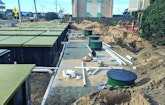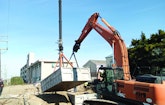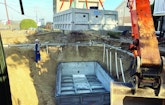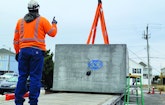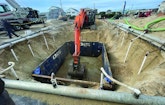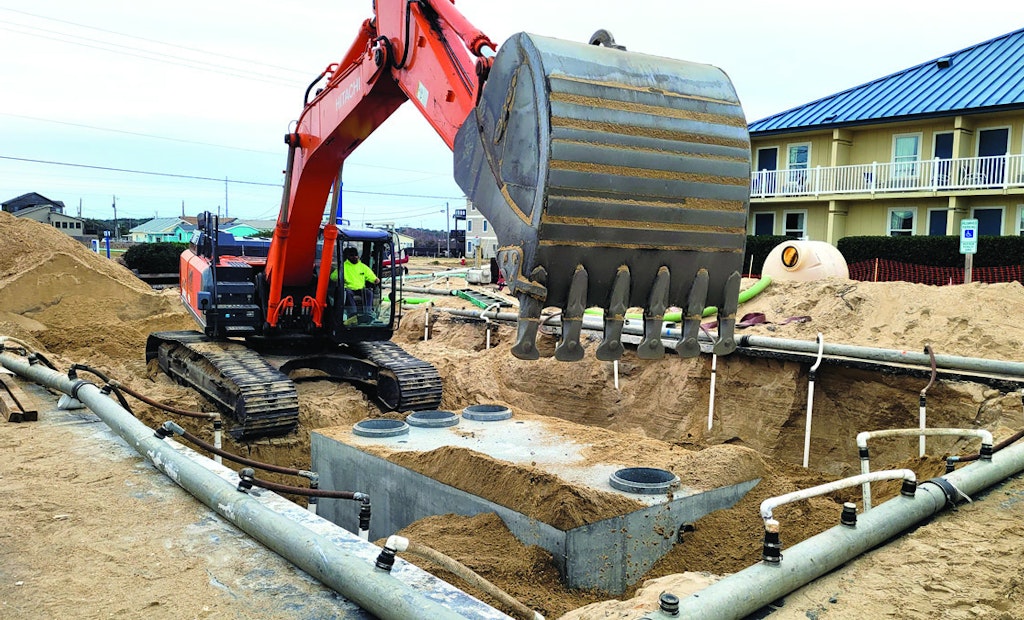
Jon Harris backfills a 10,000-gallon septic tank after installation using a Hitachi 350 excavator. (Photos courtesy of H&H Land Development)
An oceanfront resort complex consisting of hotels, condominiums, a restaurant and pool house had a 50-year-old septic system that was showing signs it had run its course.
David Christiansen of DPM Partners, who manages the property, brought in Gary MacConnell, owner of MacConnell...


